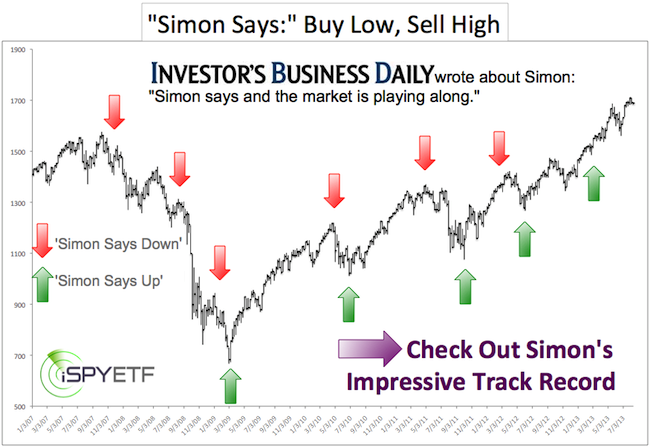Now this is an attention grabber. A 43-page study by Federal Reserve economist Tugkan Tuzun warns that (inverse) leveraged ETFs (called LETFs in the study) could contribute to a 1987-like ‘Flash Crash.’
With all due respect, in my humble option there are some holes in this 43-page study.
Fed Study Summary
Here’s the crux of the study. This is directly from the Fed report, so bear with me:
“Generating multiples of daily index returns gives rise to two important characteristics of LETFs that are similar to the portfolio insurance strategies that are thought to have contributed to the stock market crash of October 19, 1987 (Brady Report, 1988).
(1) LETFs rebalance their portfolios daily by trading in the same direction as the changes in the underlying index, buying when the index increases and selling when the index decreases.
(2) This rebalancing requirement of LETFs is predictable and may attract anticipatory trading. Portfolio insurance strategies were commonly used by asset managers in the 1980s and their use reportedly declined after the stock market crash of 1987. Rather than buying and selling stocks as the market moves, portfolio insurers generally traded index futures. The Brady Report suggests that portfolio insurance related selling accounted for a significant fraction of the selling volume on October 19, 1987. The report also notes that “aggressive-oriented institutions” sold in anticipation of the portfolio insurance trades. This selling, in turn, stimulated further reactive selling by portfolio insurers. Price-insensitive and predictable trading of portfolio insurers contributed to the price decline of 29% in S&P 500 (SNP: ^GSPC) futures through a selling cascade.”
Fed Study Flaws
To be honest, I did not have time to read the whole study, but would like to point out the following:
1) As per page 4 of the Fed report, some of the reasoning is based on ‘anectodal evidence.’ That’s no joke. It reads: “Anectodal evidence suggests that LETFs commonly use swaps and futures contracts to rebalance their portfolios. Swap counterparties of LETFs are likely to hedge their positions in equity spots or futures markets." If LETFs use index futures … how credible is a study based on anectodal evidence?
2) According to the study, the total assets of the LETF market amounts to $20 billion. This sounds like a big number, but it’s a drop in the bucket. Apple alone has a market cap of $420 billion.
Three of the most heavily traded LETFS, UltraShort S&P 500 ProShares (NYSEArca: SDS), Ultra S&P 500 ProShares (NYSEArca: SSO), and UltraProShort S&P 500 ProShares (NYSEArca: SPXU) have a combined $5 billion in assets. The SPDR S&P 500 ETF (NYSEArca: SPY) owns $154 billion worth of S&P 500 shares.
3) The report omits the hedging feature of LETFs. Leveraged ETFs have been used to hedge a portfolio (i.e. a 3x short ETF can be used to hedge long positions). As such, they act like puts and allow investors the freedom to hold on to their hedged long positions, even in a falling market.
In 2009, Jim Cramer went on a crusade against short ETFs for the same reason. He claimed that short ETFs drive down the prices of financial stocks.
I don’t know how that can be since (anectodal) evidence suggests short ETFs don’t short the underlying stocks. Even if, in March 2009, short financial ETFs accounted for a total of only $1.17 billion while leveraged long ETFs made up $2.65 billion. If anything, leveraged ETFs should have buoyed financial stocks.
Stock Market Risk
The biggest risk to the stock market is the Federal Reserve’s QE policy, not leveraged ETFs. In fact, if key support doesn't hold, stocks may drop sharply. More about must hold support here: The S&P 500 is Revealing Must Hold Support
Investor Risk
Are leveraged ETFs and leveraged short ETFs risky? You bet they are and investors should absolutely be aware of those risks.
The article “Must Know Basics About (Short) Leveraged ETFs” highlights the risks every investor needs to know before buying short or leveraged ETFs.

|